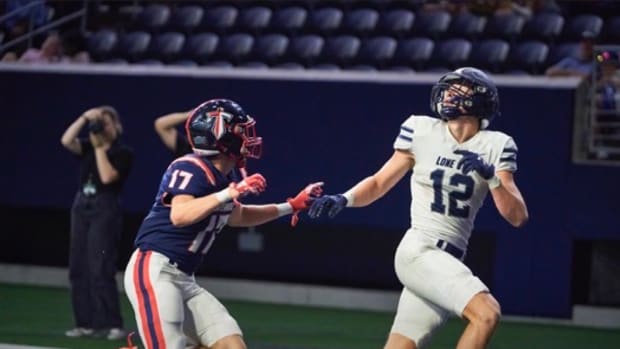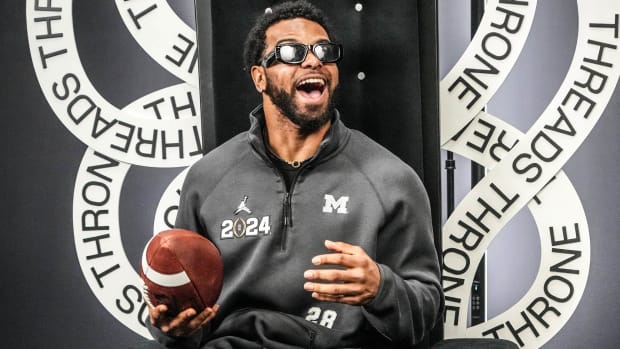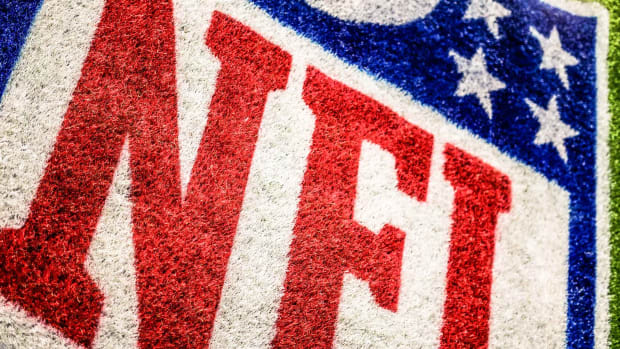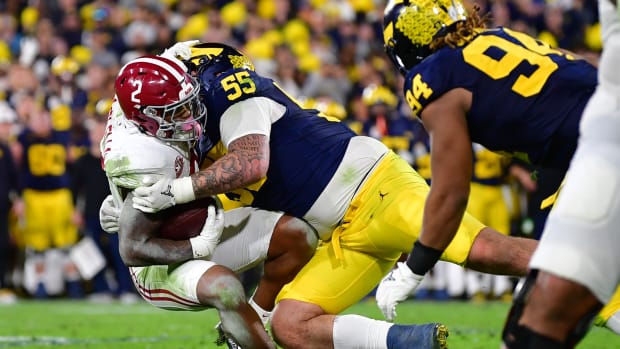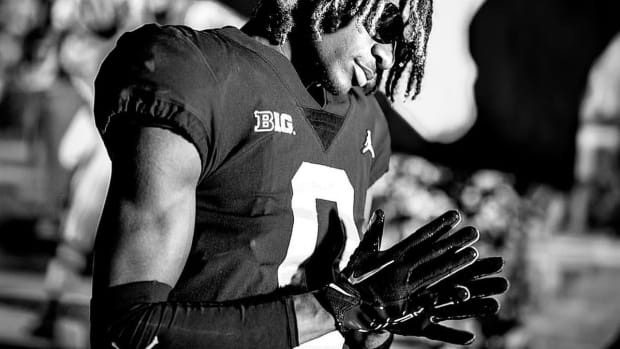Michigan Is Talented Enough To Do Much Better On The Field
Jim Harbaugh has won 69% of his games as Michigan's head coach. That's a decent number, but it's not good enough when you consider what Harbaugh is working with at U-M. He's got resources upon resources, every bell and whistle a college football program needs and, most importantly, talent. No, Michigan isn't as talented as Ohio State, but it is more talented than every other team on its schedule in 2021. And this season isn't an anomaly. Based on how Michigan has recruited under Harbaugh, that's pretty much always the case.
Former Wolverine Digest publisher Steve Deace has been using a formula for five years to predict how good every Power 5 team should be during the preseason. Unfortunately for Michigan fans, that has exposed the Wolverines. Per Deace's data, Michigan is one of, if not the biggest underachiever in the country. Here are Deace's explanations, findings and data points that suggest where Michigan should be, versus where it actually is.
— These are not a power rating of teams, but a potential rating of the talent on each roster. Bill Connelly at ESPN does a great job measuring returning production, but I wanted to also measure returning potential to complete the picture.
— Using the 247 Sports Composite recruiting rankings of the three major services (247, Rivals, and ESPN), each player on the roster is given a point total based on the star they were assessed as a recruit. So 5 points for a 5-star, 4 points for a 4-star, etc.
— Only the last four recruiting classes have been evaluated, so for this year that's 2018-21. That's because 5th-year seniors at the Power 5 conference level are just not as impactful or plentiful as they used to be. But if a 5th-year senior figures prominently on the depth chart, they are still accounted for.
— To account for teams that are considered "developmental" programs, thus they don't recruit a lot of 4- and 5-star prospects, as their players overachieve their incoming star rating they are given additional points. Players who underachieve their star rating are not lowered points, though, because the point of this exercise is to measure potential. And there could be mitigating circumstances beyond an overrated evaluation that has held a player back, like injuries.
— These are updated with all roster news through May 8. This also accounts for "super seniors" taking the extra COVID year.
Top 25 Most Talented Rosters:
1. Alabama 357
2. Georgia 340
3. Ohio State 330
4. Clemson 325
5. Oregon 314
6. Florida 313
7. Oklahoma 311
8. Texas 306
9. Texas A&M 304
10. LSU 300
11. USC 297
12. Michigan 295
13. Ole Miss 294
14. California 288
15. UCLA, Washington 286
17. Notre Dame 285
18. North Carolina 282
19. Florida State, Iowa State 280
21. Penn State 278
22. Mississippi State, Pittsburgh, 275
24. Utah 272
25. Kentucky 271
Big Ten
(number in parentheses is difference from last year's roster score)
1. Ohio State 330 (-)
2. Michigan 295 (-2)
3. Penn State 278 (-11)
4. Nebraska 270 (+15)
5. Indiana (-8), Purdue (-4) 269
7. Minnesota 268 (+9)
8. Maryland 267 (+15)
9. Wisconsin 266 (-4)
10. Illinois 265 (+12)
11. Michigan State 261 (+4)
12. Iowa 247 (+1)
13. Rutgers 244 (+12)
14. Northwestern 225 (-19)
ACC
1. Clemson 325 (+34)
2. Miami 290 (+20)
3. Notre Dame 285 (-3)
4. North Carolina 282 (+15)
5. Florida State 280 (+23)
6. Pittsburgh 275 (+13)
7. Virginia 270 (+14)
8. Virginia Tech 269 (-7)
9. Georgia Tech 262 (+12)
10. NC State 259 (-3)
11. Louisville 258 (+22)
12. Boston College 257 (+42)
13. Syracuse (+20), Wake Forest (-) 255
15. Duke 219 (-23)
Pac-12
1. Oregon 314 (+8)
2. USC 297 (+22)
3. California 288 (+31)
4. UCLA (+31), Washington (+11) 286
6. Utah 272 (+43)
7. Arizona State 265 (+20)
8. Washington State 264 (+30)
9. Stanford 255 (+11)
10. Arizona 254 (+22)
11. Colorado 227 (+7)
12. Oregon State 206 (-17)
Big 12
1. Oklahoma 311 (+11)
2. Texas 306 (+24)
3. Iowa State 280 (+19)
4. Oklahoma State 270 (+16)
5. Baylor 265 (+2)
6. TCU 249 (-14)
7. Kansas State 235 (-1)
8. West Virginia 233 (-16)
9. Kansas 230 (-6)
10. Texas Tech 218 (-3)
SEC
1. Alabama 357 (+40)
2. Georgia 340 (-20)
3. Florida 313 (+8)
4. Texas A&M 304 (+39)
5. LSU 300 (+43)
6. Ole Miss 294 (+28)
7. Mississippi State 272 (+12)
8. Kentucky 271 (-10)
9. Missouri (+25), Tennessee 270 (-7)
11. South Carolina 268 (-4)
12. Arkansas 265 (+11)
13. Auburn 254 (-35)
14. Vanderbilt 238 (+14)
5 Most Improved Rosters:
1. LSU +43
2. Boston College +42
3. Alabama +40
4. Texas A&M +39
5. Clemson +34
5 Most Declining Rosters:
1. Auburn -35
2. Duke -23
3. Georgia -20
4. Northwestern -19
5. Oregon State -17
It's true that Harbaugh has won 69% of his games at U-M, which isn't awful, but it's also true that he's just one game over .500 against Power 5 teams who are also over .500 (22-21). Below is each qualifying opponent with its record and Michigan's record against them since Harbaugh took over in Ann Arbor.
Big Ten Opponents
Indiana, 36-35 (5-1)
Michigan State, 41-31 (3-3)
Ohio State, 68-8 (0-5)
Penn State, 53-22 (3-3)
Iowa, 53-21 (1-1)
Minnesota, 41-30 (3-0)
Northwestern, 46-28 (2-0)
Wisconsin, 56-19 (2-3)
Non-Conference Opponents
Florida, 2-1
Utah, 0-1
Florida State, 0-1
Notre Dame, 1-1
Alabama, 0-1
Michigan has a .500 or worse record against Michigan State, Ohio State, Penn State, Iowa, Wisconsin, Utah, Florida State, Notre Dame and Alabama. Per Deace's data, Michigan is more talented than all but Ohio State and Alabama from that list. Within the conference the talent margin is close compared to Penn State, but compared to everyone else, it's not.
Conversely, Harbaugh and Co. have beaten up on the bottom feeders of the Big Ten during the same stretch of time. In fact, Michigan is undefeated against every Big Ten foe that is under .500 over the last six seasons. Here are those opponents with their respective records and Michigan's mark against them.
Maryland, 20-43 (5-0)
Rutgers, 16-53 (6-0)
Illinois, 22-47 (2-0)
Nebraska, 31-39 (1-0)
Purdue, 24-44 (1-0)
So the question is, is that acceptable? Is it acceptable to be perfect against subpar competition and barely afloat against teams with a pulse? Depending on how you answer that question will put you in one of two camps when it comes to Jim Harbaugh.
Steve, Chris Breiler and myself talked about all of this at length during yesterday's podcast and came to one obvious conclusion — Jim Harbaugh and Michigan are doing less with more. Per the numbers, Michigan has more talent than everyone it will face in 2021 except for OSU. To me, that means U-M should be competitive against EVERYONE on its schedule. Yes, even Ohio State. Sure, the Buckeyes are quite a bit more talented — 35 points to be exact per Deace's numbers — but on paper using Deace's formular, Michigan is that far above teams like Indiana, Wisconsin, Michigan State and certainly Rutgers, and we all know how those games went last year.
At the end of the day, Michigan fans just want to see wins. In order for that to happen, Jim Harbaugh and his staff need to coach smarter, identify opponent weaknesses better, play to Michigan's strengths more often and put players in a position to succeed on a down-by-down basis. That's obviously easier said than done, but in year seven, Harbaugh needs to figure it out.
